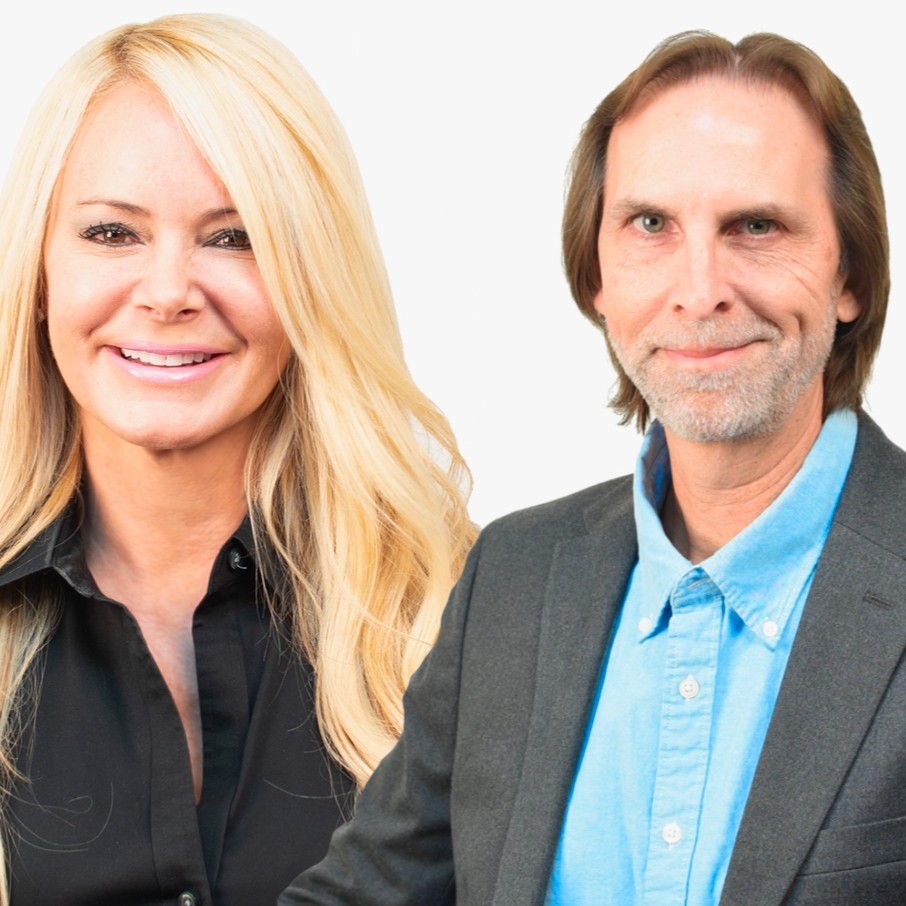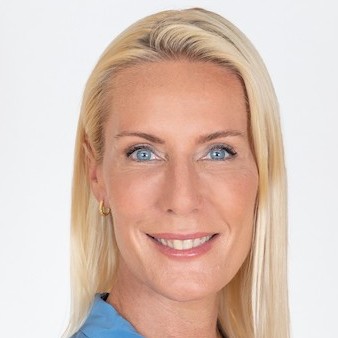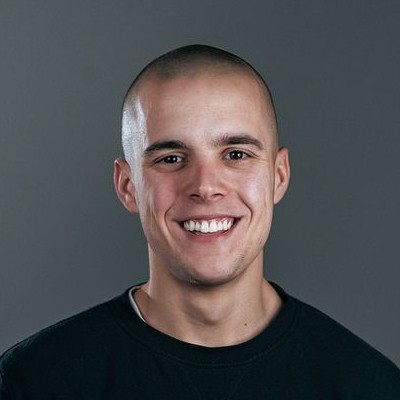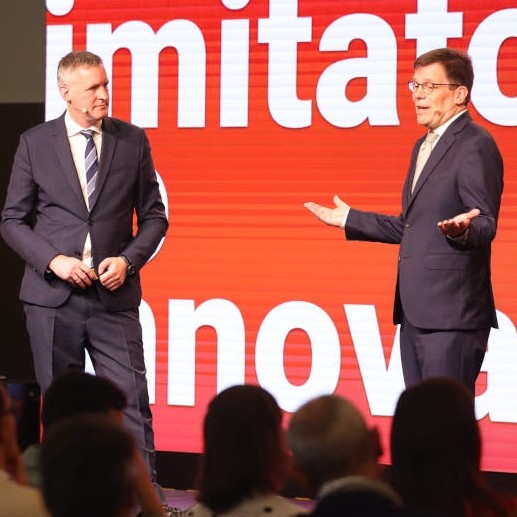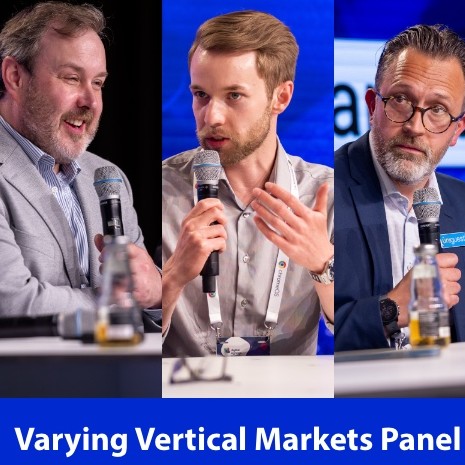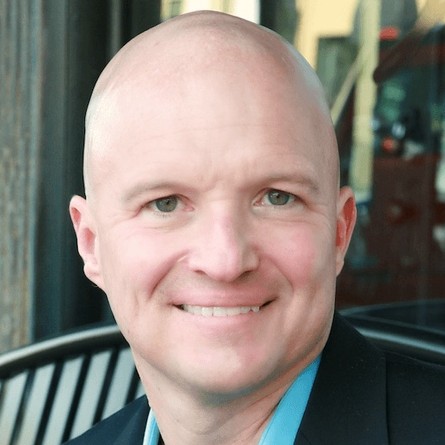Lisa Schneider & Travis McMahand, Videotel
Description
The 16:9 PODCAST IS SPONSORED BY SCREENFEED – DIGITAL SIGNAGE CONTENT
There are not a lot of companies that have been involved in what we now call digital signage for 44 years, but Videotel has been selling technology that puts marketing information on screens since 1980.
The company started with VCRs (younger readers may have to Google that) and then started designing, manufacturing and selling DVD players that, unlike consumer devices, would happily play out a set of repeating video files for weeks, months and years. Back in the days before fast internet connections, cloud computing and small form factor PCs, that's how a lot of what we now know as digital signage was done.
About 14 years ago, the San Diego-area company added dedicated, solid state digital signage media players - and that product line has steadily grown to include networked and interactive versions. The company also now has interactive accessories for stuff like lift and learn, and directional speakers that help drive experiences in everything from retail to museums.
I had a good conversation with Lisa Schneider, who runs sales and marketing, and Travis McMahand, Videotel's CTO. We get into the company's roots, the evolution to solid state media players, and how Videotel successfully competes with $400 and higher players, when at least part of the buyer market seems driven mostly by finding devices that are less than $100.
Subscribe from wherever you pick up new podcasts.
TRANSCRIPT
Thank you for joining me. Can you introduce yourselves and tell me what Videotel is all about?
Lisa Schneider: Yes, absolutely. Hello, Dave. Thank you for having both Travis and me today. We appreciate it. My name is Lisa Schneider and I am the executive vice president for sales and marketing for our company, Videotel Digital.
We were founded in 1980. Gosh, it's been almost 44 years now, back when we were manufacturing top-loading VCRs, that went into industrial-grade DVD players, and now in the last 14 years, we are manufacturing digital signage media players. We have interactive solutions that include various sensors like motion sensors, proximity sensors, and weight sensors. We've got mechanical LED push buttons and touchless IR buttons and RFID tags, and things like that that create interactive displays. We also provide directional audio speakers. We have various form factors for all types of projects, and then we also have Travis on the line with us. I'll let Travis introduce himself.
Travis McMahand: Oh, hi, I'm Travis McMahand I am the CTO of Videotel Digital.
Where's the company based? Is it in San Diego?
Lisa Schneider: Yes, we are in, it's San Diego. It's actually Chula Vista, borderline San Diego. So in California.
San Diego area.
Lisa Schneider: Yes, San Diego area. Beautiful San Diego.
So I've been aware of your company forever and going all the way back to the days when you were doing industrial grade, commercially oriented DVD players. In the early days of digital science before things were networked, that's what people were using and if you used a regular DVD player or even a VCR or something like that, the thing was really not set up to play over and over again if you were using just like a consumer-grade device.
So the whole idea was you were, you guys developed commercial-grade versions that were rated to last, for days, weeks, months, years. Is that accurate?
Lisa Schneider: Yes, that is accurate, and it was, that was our flagship product back in the day. That was because we made a truly industrial-grade player and it would auto power on, auto seamlessly loop and repeat without any manual interaction, even without a remote. So it was a looping player.
We actually still have three different types of industrial-grade DVD players that we still offer. They're actually really popular in healthcare facilities because they are specifically UL-approved for medical DVD players still, and they are still out there and, we are still producing them.
The attraction for that at the time was that just the absence of really networked media players unless you were quite sophisticated and were using big box PCs and everything else, I assume that market with the exception of what you’re saying about Hospitals is largely gone away?
Lisa Schneider: It hasn't been, for example, like sometimes with waiting rooms, people are still using DVDs for movies, for entertainment purposes, not just in healthcare. Sometimes there are still people who are self-burned content for museums. It's just simple for them to just throw the disc in and then they walk away and it just continuously loops. So they're still out there.
It's not completely gone away and we are one of the only ones left though that is still really providing the industrial grade DVD players.
You said about 14 years ago, you got into digital signage media players that were not based on DVDs, it was based on hard drives or solid-state storage.
Lisa Schneider: Yes, we started with solid state media players that were just simply looping off of an SD card or USB, no network connection, none of the fancy stuff, and that was really kind of the migration from the DVD, because people didn't want to use DVDs anymore. They just wanted to upload their content, do the same thing, load them, and go.
So we probably still have a few versions of just solid-state players. That's how we entered the market. But one of the really cool things we did was we made one of them interactive, which, that's where we come into the interactive solutions, which we can talk about too.
The primary products that you have now are network-connected, right?
Lisa Schneider: We have both. We still have solid-state digital signage players, for those simple needs, and then we do have networked players as well.
I'm thinking there's an awful lot of cases like retail marketing for brands for product launches and things like that, where, yes, you could use a network digital signage player, but it's loading up a set of files at the start and that's really all it's ever going to use, right?
Lisa Schneider: Yes, that's a lot of the use cases, where they just want to upload the content and let it go but there are obviously use cases where the content is ever-changing and they can push out content on our remote players, network players, via quick push.
Do you have device management? Will you know what's going on with these devices, as they're out in a big box or whatever?
Lisa Schneider: Yes, one of our new player, we actually just did a press release on it for our VP92 4K network player. It will allow customers to use our free embedded software on the player that will allow them to push out the content remotely and that they can see what is being played in the various locations, wherever the box is deployed to, and then if it's just a single unit or hundreds of units if it's up in the thousands, then we recommend our cloud-based CMS software where they can manage, do all the management within the software itself.
So you have your own software, but I'm assuming you're not selling yourself as a software company?
Lisa Schneider: No, we are not selling ourselves as a software company. We have hardware and then we have various software options. But it is embedded in the players to make it extremely simple to use.
And it's tuned specifically for your devices.
Lisa Schneider: Correct. Yes.
Can a third-party CMS company, a CMS software company use your boxes?
Lisa Schneider: Travis that might be a good question for you to answer.
Travis McMahand: That's a possibility. We design our players to be simple and reliable. We don't make it so difficult to set up a program, so in doing that, we've hidden or disabled, certain features within the operating system. But we can still work with companies if they have a specific application or service that they want to use. We can definitely work with companies to try to make that happen.
Okay, so I guess a scenario would be something like a retailer or even a brand that has networks in stores and is using a CMS for the big displays for retail marketing and they say, we would like to use your stuff for the interactive or whatever, can we use the same platform to manage both of them?
Travis McMahand: Yeah, that's a possibility. It goes on a case-by-case basis.
It's not something you're actively marketing, but technically you could do it if it makes sense for both sides, right?
Lisa Schneider: Absolutely, Dave. That's what I'd like to interject. We're open to those conversations with anybody who is interested, especially if it is a larger project is something I would entertain.
The hardware sector has been a tough one for a lot of the companies that have media players, with maybe the notable exception of BrightSign, which has a very big footprint everywhere, but the PC guys in particular, struggled to, in recent years, get relevance, and a lot of that seems to be driven by a race to the bottom to see how low we can go in terms of cost for a media player, and we now have Amazon with a custom build or kind of a stripped-out build of its Fire Sticks that are $99.
Has it been a challenge to compete with that stuff or, do you operate differently or have a different market?
Lisa Schneider: That's a great question, and yes, I did see that new Amazon $99 Fire Stick. But we're very unique in a sense where, sure you can purchase a $99 player, but

